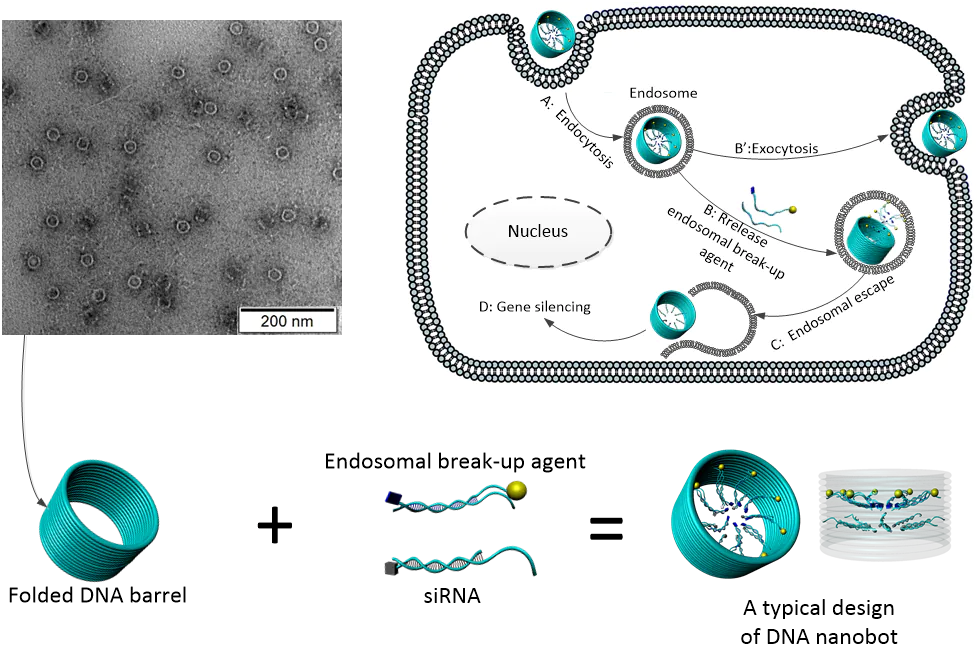Author: Maryam Sarah Ahmed

The process of mechanotransduction – by which cells convert mechanical stimuli into biochemical signals – is crucial in many biological mechanisms; for example, the detection of sound waves. Sound waves exert a force on proteins linked with the hair bundles of the inner ear, resulting in these protein channels opening to allow an influx of ions and thus allowing an action potential to pass down the acoustic nerve. In this way, the mechanical stimulus of the sound wave gets converted into a biochemical signal, the action potential, which then enables us to hear noise.
However, sometimes the process of mechanotransduction dysfunctions and can result in diseases such as cancer. Studies have shown that some types of cancer cells have reduced mechanosensitivity, meaning they are less responsive to mechanical stimuli, although further knowledge of mechanotransduction in cancer cells is currently very sparse. This is because in order to investigate cellular mechanosensitivity, scientists would have to be able to apply low range piconewton forces onto cells. One newton is around the force that an apple sitting on your palm would exert on you – a piconewton is 10^12 times smaller than this. There are many technologies existing today that would allow the application of such small-scale forces for biological research, but these technologies are very expensive and also are limited in the number of receptors they can study at a time.
To counteract some of these issues, a research team from Inserm, CNRS and Université de Montpellier decided to create the Nano-winch, an origami nano-robot made of DNA. The origami method allows uncomplicated assembly of the robot, while its nanometric size ensures that it matches the scale of human cells, and the DNA it is made of enables it to better interact with living cells. The Nano-winch is able to work on many mechanoreceptors (cellular receptors that detect mechanical stimuli) simultaneously. It can also apply and control forces with the accuracy of one piconewton.
The Nano-winch functions by acting as a spring that can exert stress on mechanoreceptors. It has an ‘autonomous’ mode where it can apply forces without external signals; this is possible because single stranded DNA connectors are used in the structure of the robot. In this mode, the Nano-winch can exert forces of around 1 to 25 piconewtons. However, for cases where a higher amount of force is required, there is also a ‘remotely activated’ mode in which oligonucleotides are added to the DNA connectors, making them double stranded rather than single stranded. This increases the stiffness of the robot and helps it exert larger forces with finer control.
The creation of the Nano-winch widens possibilities in cellular research - this robot can be used with other technologies like super-resolution electron microscopy to better investigate mechanotransduction in cells. With further improvements it could even explore cellular mechanisms which are currently impossible to study with existing technologies.
References
Chin, L., Xia, Y., Discher, D. E., & Janmey, P. A. (2016). Mechanotransduction in cancer. Current opinion in chemical engineering, 11, 77-84. https://doi.org/10.1016/j.coche.2016.01.011
INSERM (Institut national de la santé et de la recherche médicale). (2022, July 28). A 'nano-robot' built entirely from DNA to explore cell processes. Retrieved from ScienceDaily: https://www.sciencedaily.com/releases/2022/07/220728075911.htm
L. Dunn, S., & Olmedo, M. L. (2016, May 1). Mechanotransduction: Relevance to Physical Therapist Practice—Understanding Our Ability to Affect Genetic Expression Through Mechanical Forces. Physical Therapy, 96(5), 712-721. https://doi.org/10.2522/ptj.20150073
Mills, A., Aissaoui, N., Maurel, D., Elezgaray, J., M. F., Vasseur, J. J., . . . Bellot, G. (2022). A modular spring-loaded actuator for mechanical activation of membrane proteins. Nature communications, 13(1), 3182. https://doi.org/10.1038/s41467-022-30745-2
